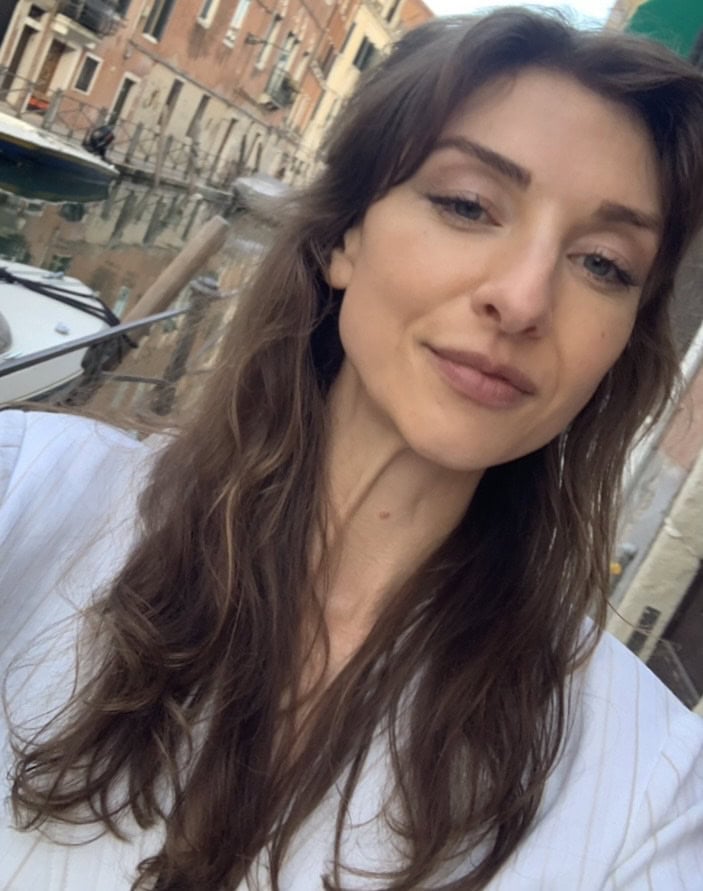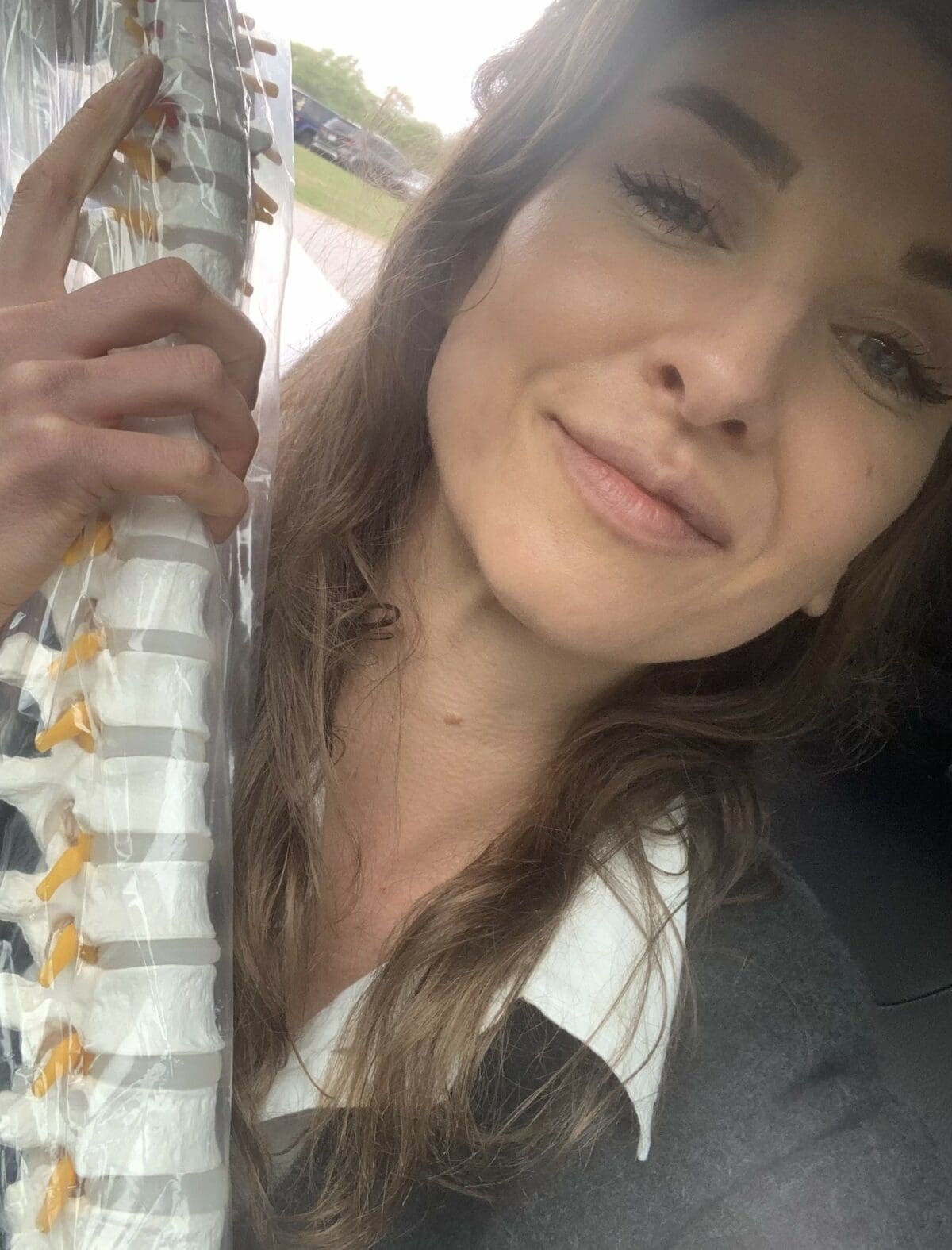STRENGTH IN EVERY STORY™
Driven by Pain and Finding a New Purpose
Kayla’s Story, February 2025
As told by: Fabiola Palomo
Diagnosis received: Post-traumatic headache, Intractable chronic migraine with aura, Cluster headache, Pseudobulbar affect
Symptoms: Flashing lights (aura), Intense head pain, Nausea, Visual distortions
Kayla’s journey with cluster headache and intractable chronic migraine began at 28 years old, after being struck by a motorcycle as she was walking at a crosswalk in the bustling borough, Manhattan, New York. The head pain came soon after arriving back from the hospital, having spent three days under care for an intraparenchymal hemorrhage, or bleeding within the brain tissue.
The attack struck with intense pain, leaving Kayla unable to lie down or see anything but bright flashes of light. It was as if the room and her surroundings became a surrealist painting, or what she described as “a melting room,” due to her vision becoming distorted and nausea kicking into full gear. For Kayla, these were the first of many headache attacks that she would wake up to every morning for the next three years of her life.

An Unforeseen Change in Career
Before her headache attacks developed, Kayla was a writer and producer in television. After the accident, Kayla was expected to return to her demanding career because she wasn’t seen as someone with a disability, so there were no accommodations made for the challenges she faced daily.
Her work as a writer and producer required traveling constantly and regularly using multiple computer screens at once. “My life was pretty much unbearable… [On days with heavy screen time] I would throw up after [work], my eyes hurt from being on the screen all day. The screen time was causing my symptoms to become unmanageable,” said Kayla.
While in search of putting a name to her condition, many doctors advised her to become more acquainted with the computer screens and to simply “push through” the pain she was experiencing. However, the situation was starting to become too much to bear.
Kayla decided she could no longer keep herself in a cycle of pain, having to face the complete loss of letting go of a career she worked hard to obtain as a writer and TV producer. “After seeing so many doctors and trying to figure this out, I decided I needed to stop doing the career that I worked for eight years and that I went to school for… I realized that at the end of every day I was just so sick and miserable,” shared Kayla.
After a year and a half of leaving behind her career in TV production, it was then that Kayla saw drastic changes in her symptoms, obtaining momentary relief.

Learning About Headache and Migraine While Seeking Successful Treatment
The first 2 years after her injury, Kayla had actively been educating herself about her symptoms, holding onto curiosity as she visited numerous doctors that could help her recognize and fully comprehend her condition. Kayla could no longer sit in tears in a dark room without finding answers, believing she was “wasting her life” without taking the initiative to understand her body more to manage her headache attacks.
She took it upon herself to visit doctors nearly every day in hopes of being led towards her healing journey. Given her symptoms, Kayla was first diagnosed with post-traumatic headache and later migraine disease, which has evolved into intractable chronic migraine with aura. “It was so bad it took me to the emergency room about 3 times,” said Kayla. “It’s not going away with triptans. Nothing is working.” It took 2 years for Kayla to find a doctor to try her on a successful CGRP medication for migraine when triptans were doing nothing to relieve her symptoms.
After 3 years and consultations with more than 6 specialists, Kayla was finally diagnosed accurately with cluster headache and prescribed an oxygen tank for treatment. “That was the thing that worked. It confirmed that that was a different [headache] type… I really had to educate myself as to what was going on so I could have the best [treatment] option.”
Previously, Kayla was given treatments that did nothing to alleviate pain and worsened her symptoms, “A lot of treatments or medications or activities make certain types of headaches worse if you have multiple types. You’re not doing yourself any good… Differentiating is huge as far as figuring out how to fix it,” said Kayla.
Facing the Losses and the Impact on Mental Health
Along the way, the situation took a toll on Kayla’s relationships, who didn’t understand the impact of living with headache and migraine disease. “I did lose a lot of my friends because I wasn’t able to travel as frequently or go to social events… I knew a lot of people got really offended by that. It [even] affected my family.” Her symptoms were so severe Kayla had to postpone her first date with her now fiancé for a week and missed her best friend’s wedding celebration due to debilitating migraine attacks.
Before receiving an accurate diagnosis, Kayla felt very alone, and the stigma held against headache and migraine disease began to trickle in. “Definitely, my work didn’t understand. Nobody really understood why I couldn’t perform the way I used to, so that was stressful, and I was very ashamed back then,” shared Kayla.
“I would wake up every day in so much pain that I would cry all the time, uncontrollably… I was just very emotional, and that lasted for so long, to the point where I thought I may have some other psychological or emotional impact. It was definitely just that chronic pain that sort of wears on you. I felt very hopeless.”
Establishing Good Rapport with Loved Ones
For Kayla, she’s received profound support from her fiancé, whose presence makes all the difference. “My fiancé would just say ‘Hey, you don’t need to do anything or say anything. I’ll just be here with you.’” Unlike others who may not understand such conditions or grow frustrated, he doesn’t pressure her to feel better—he simply stays by her side.
“That takes a lot of the pressure off of just trying to act like you’re okay,” she said. Through his support, he’s created a safe space for Kayla to focus on recovering without the pressure of having to reassure him and others. “If people can understand that might be all somebody needs… that is tremendous.”


For People Facing Similar Challenges
Though times might’ve seemed hopeless, with resilience, Kayla reflects on what she would’ve done differently, “I would have told myself I will find a way to live in this new normal, new state, and I will find ways to improve. Staying alive every day is really big…” Kayla shared.
“Whenever somebody has the capacity or the strength or the energy to figure out how to move forward and to learn how to make their life more improved, it will get better over time. Give yourself time to learn how to manage… It does get better, especially with time, as you develop a personalized way to deal with that.” Kayla also advised, “Trust yourself when something is or is not working for your migraine.”
A Path Towards an Exciting New Beginning
While Kayla had to leave behind a career she was passionate about, another flourished with her interest in anatomy and neuroscience. “During the process of figuring out how I could better my life, what I was going to do next now that I wasn’t able to do the career that I thought I was going to do forever… I got textbooks, and I started studying neurology and got really interested in anatomy and brain science… it helped me get engaged and be more interested in the process [of my healing journey],” said Kayla.
What initially started as a hobby, it led her to go back to school to get her science prerequisites to pursue her doctorate’s degree and career in functional neurology, “The goal is to help future patients with brain injury and headache.”

Addressing Stigma with Headache and Migraine Disease
For years, Kayla kept her condition hidden due to the stigma. “I really try not to let people know… which is terrible…,” she admits. After the injury, she faced the pressure of working in a fast-paced career, leaving her to sit with shame and guilt. “There was an expectation to pick up where I left off, and I definitely was not able to do that… You can’t fall behind at all because there is a team of people that are depending on you. If you’re slow or not working at full capacity, you’re letting everybody down.”
Now, in an academic setting, Kayla has found a community that understands her journey. Professors have been more accommodating to her needs, and doctors in her program have offered guidance on possible treatment options. Surrounded by compassionate individuals, Kayla feels supported within her network. “It’s been a very great community to be a part of,” shared Kayla.
